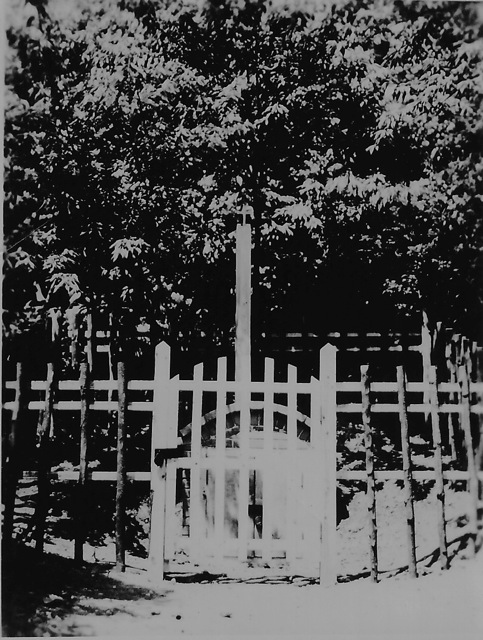|
Fukuoka
POW Camp #24-B Senryu (Emukae, Sasebo) |
Main Page Main Camp List About Us
| Fukuoka
Branch Camp #24-B (SUMITOMO KOGYO SENDRYU KOGYO-SHO), Nagasaki-ken, Kita-Matsuura-gun, Emukae-machi, SENRYU (now part of Sasebo City) Satellite map Aerial (Mar. 1947; courtesy of Japan Map Archives) Area map Fukuoka Camp #24 was in a district called Senryu, which sounds like SEN-DYU when pronounced; POWs wrote it as Sendryu or Sendyu. It was the name of the train station there at the time, now called "Senryu-ga-taki" (because of a nearby taki, or waterfall), in the city of Sasebo. Timeline: 15 Jan 1945: Established as Fukuoka #24 Senryu (Emukae) 16 Jan 1945: 150 Australian and 35 American POWS arrive from Awa Maru 10 Mar 1945: (approx date) 134 British and 1 American arrive ex Taiwan (Formosa) on Taiko Maru Sep 1945: Rescue effected Photographs: (Courtesy of Neil MacPherson) Americans - Front row: 3rd from left is George Detre; 6th from left is Aussie RAAF Flight Lt Jim Sutherland Australians A to L (identity list) Australian M to Z (identity list) - 2nd row, 1st man on left is American Dr. Julian Goodman Modern picture of camp hill Post-war picture of typical mine work "While the miners in the photo
are
Japanese the conditions for the much bigger bodied Westerners crouching
for long hours in the confined space while working can be imagined. I
hope that the photo, which was supplied to me by the officials of
Sumitomi Mining during my visit in 2002, can be used as part of the
history of World War II, it is difficult for us survivors to adequately
describe the conditions under which we worked, this photo does this
very well."
Memorial plaque - Established in April 2004 by the town of Emukae and former POWs Neil MacPherson and Owen Heron, to remember the 267 Allied POWs who labored at the Senryu coal mine, and the 17 British and three Australian POWs who perished there. (Exact location) FUK-24 sketch MacPherson FUK-24 Goodwin camp layout FUK-24 Senryu Coal Mine NARA See short biography on the passing of Flt Lt Sutherland |
Primary
Labor: The POWs worked as slaves for the Sumitomo Coal Mining Company, Senryu Mine. Hell Ships: Awa Maru- carried the Australians & Americans from Singapore 26 Dec 1944 Taiko Maru- carried only British from Taiwan (Keelung) departing 27 Feb 1945- arrived 10 March 1945 Rosters: Total = 267 POWs (117 British, 114 Australian, 35 American, 1 Dutch; 20 deaths) British (revised and updated) Australians & (1) Dutch Yank Roster Original rosters - American, British, Australian, Dutch (PDF) Original death roster; British, American, Australian (Awa Maru) rosters (PDF) - These rosters also show from which camp the men were transferred: British, from either Taiwan #1 or #3; Australian, from Thailand camps; American, from Thailand or Philippine camps. FUK-24 Rosters 1946-02-16 Additional rosters (RG 407 Box 102) POW Shirt at Australian War Museum: POW Stanley Herron had all sign his shirt just before rescue. Additonal information provided by Neil MacPherson. Short History: (Contributed by WX16572 Neil O. MacPherson, 2/2nd Pioneer Battalion) 15th December 1944, saw 545
Australian prisoners from River Valley Road
camp, under the leadership of Flt Lt Sutherland, board the Awa
Maru in Singapore. All are survivors of A Force on
the Death railway. After 11 days battened down under scorching decks we
sailed for Japan on Boxing Day. On 15th January 1945 the prisoners
staggered ashore at Moji, Kyushu - dirty, bedraggled & starved,
but unbowed, it was mid winter, snow on the ground.
150 of the group travelled to Senryu Emukae, after several days of training by Jap miners we were classified fit to work in a Sumitomo owned coalmine. Compared to the horrors, death, disease, squalid conditions and brutal treatment on the Burma railway, conditions at camp 24 were 5 star. Comfortable warm huts, 12 men to an airy room. Apart from petty harassment by the guards, insufficient food to sustain the long shift in cramped and hazardous conditions underground, the morale was excellent. The Jap miners were helpful in teaching us how to survive in this dangerous environment, and unlike other work areas, no punishments were handed out. On the 16th August 1945 we were told “the war is over”. We took over the camp. Supplies dropped by US bombers helped make the next 5 weeks a pleasant memory. Hikes into the countryside, invitations from farmers, sharing their scarce food, prisoners in return sharing the bounties from the US planes. See also this special page on MacPherson and Owen Heron PHOTO: MacPherson with medals |
Grave
site at Senryu - Photo
courtesy of Jennifer Bidwell: "My uncle, James Alistair McNab, died on
19 January 1945, and I understand that his remains/ashes were interred
at the Tomb at Sendryu before being removed to the British Commonwealth
Cemetery in Yokohama." See also this contribution, a letter of
condolence from Flight Lieutenant James Sutherland (RAAF) to
Mr.
McNab. |
|